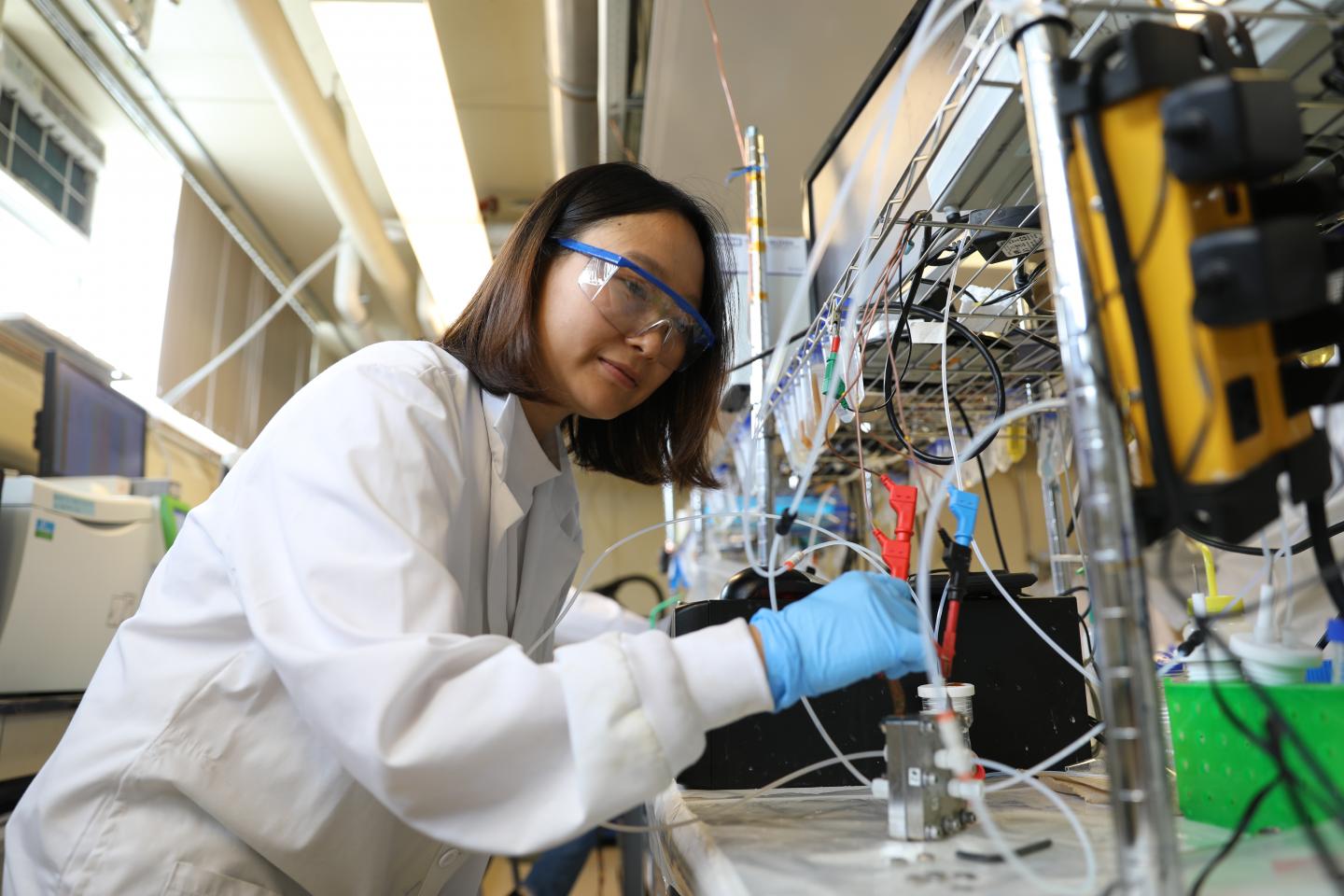
Researchers from U of T Engineering have devised a new electrochemical path to transform CO2 into valuable products such as jet fuel or plastics.
The team believes that the novel technique, which they describe in detail in a paper in ACS Energy Letters, could help make the process of converting CO2 in the air into commercial products more economically feasible.
“Today, it is technically possible to capture CO2 from air and, through a number of steps, convert it to commercial products,” said Professor Ted Sargent who led the research team.
“The challenge is that it takes a lot of energy to do so, which raises the cost and lowers the incentive. Our strategy increases the overall energy efficiency by avoiding some of the more energy-intensive losses.”
Direct-air carbon capture is still a relatively new, emerging technology. The Canadian company Carbon Engineering captures CO2 in the air by forcing air to pass through an alkaline liquid solution. The gas dissolves in the liquid and forms a substance called carbonate.
Fully recycling the dissolved carbonate involves turning it back into CO2 gas and then into chemical building blocks that form the basis of plastics and fuels. One method of doing this involves adding chemicals that covert the carbonate into a solid salt and then heating the salt powder to temperatures of above 900C – producing CO2 gas for future transformations.
However, this technique requires a substantial amount of energy – making the process quite costly.
The researchers present an alternative method which applies an electrolyzer to convert dissolved carbonate back into CO2, achieving 100% carbon utilization across the system and removing the costly the heating step.
“We used a bipolar membrane, a new electrolyzer design that is great at generating protons,” said Geonhui Lee, who along with postdoctoral fellow Y. Chris Li is among the paper’s lead authors.
“These protons were exactly what we needed to convert the carbonate back into CO2 gas.”
According to the abstract of the paper, “Using an Ag [silver] catalyst, we generate syngas at a 3:1 H2:CO ratio, and the product is not diluted by CO2 at the gas outlet; we generate this pure syngas product stream at a current density of 150 mA/cm2 and an energy efficiency of 35%.”
Syngas is a gas mixture that can be easily turned into products such as plastic precursors and jet fuel.
“This is the first known process that can go all the way from carbonate to syngas in a single step,” said Sargent.
“Once the CO2 turns into carbonate, it becomes inaccessible to traditional electrolyzers,” says Li. “That’s part of the reason why they have low yields and low efficiencies. Our system is unique in that it achieves 100% carbon utilization: no carbon is wasted. It also generates syngas as a single product at the outlet, minimizing the cost of product purification.”
Sargent said that more work is necessary to scale the process to levels adequate for industrial application.
“It goes a long way toward answering the question of whether it will ever be possible to use air-captured CO2 in a commercially compelling way,” he says. “This is a key step toward closing the carbon loop.”
Journal Citation
